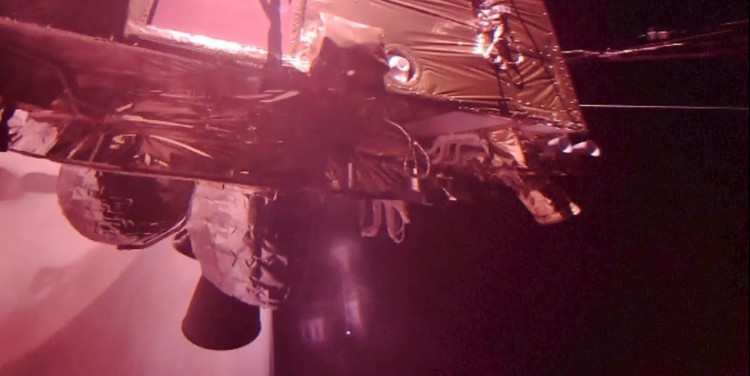China's Tianwen 1 spacecraft, which has been orbiting Mars for nearly a year, has captured a "selfie" video of the probe passing in front of the planet. This footage was captured by a camera mounted on the end of a slender arm that extends 1.6 meters away from the spacecraft and is used by operators to monitor the spacecraft's health.
The brief video, released by the China National Space Administration on Monday, shows the spacecraft's body, engines, and solar array flying through space, with bits of Mars' surface visible in the backdrop.
The spacecraft is China's first mission to enter Mars' orbit, making the country one of only a few to study Mars robotically.
Tianwen 1 arrived on Mars in May of last year with a lander and a rover, both of which safely landed on the planet's surface.
When it comes to spaceflight operations, China is notoriously secretive, disclosing only minimal information about launches and spacecraft. However, the country has revealed some tantalizing images of the Tianwen 1 mission.
This isn't even Tianwen 1's first selfie. In early January, the orbiter released a small spacecraft with a camera onboard, which captured images of Tianwen 1 with a massive Mars in the background. Tianwen 1 also took a photo of itself while traveling to Mars by releasing another spacecraft equipped with a camera, which photographed the vehicle enclosed in its protective shell. This recent video was captured by a camera connected to Tianwen 1.
For decades, spacecraft selfies have been a fun part of space missions built into vessels. NASA's Mars rovers, including Curiosity and Perseverance, have generated stunning selfie mosaics of themselves and the Martian terrain.
After landing on Mars last year, China's rover took a photo of itself on the Martian surface. Additionally, when NASA's Insight lander touched down on Mars, it was accompanied by two small satellites, one of which took a selfie while in space with Mars in the background.
China's space program plans to finish its Tiangong space station and launch a space telescope in the next half-decade. The country also intends to conduct more research into a "plan for a human lunar landing" as well as crucial technology research in order to establish the groundwork for exploring and developing cislunar space.
China eventually intends to collaborate with Russia and other foreign partners to construct a "research station" on the Moon. This puts China in direct rivalry with NASA, which is attempting to unify nations under the Artemis Accords in order to conduct a series of lunar landings in the late 2020s and early 2030s.





